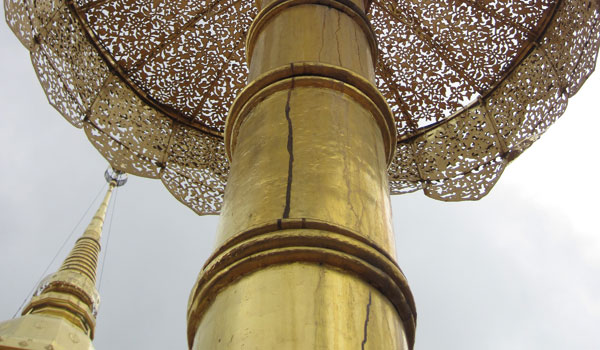Today I’ll be teaching (for free to practise) my first meditation 1-1 Skype session which to tell you the truth, I’m feeling slightly nervous about. For one, despite the fact that I’ve been practising yoga for approximately 10 years and meditation for four, I still feel like there’s a lot I don’t know. Plus, just because you practise or enjoy something, doesn’t mean it’s easy to teach.
Meditation teacher training
In April this year, I’ll be starting a one year meditation, stress management, applied philosophy and eastern psychology teacher training course, which I’m pretty excited about, so although there’s no rush to start teaching, I figured it would be helpful to work out who I’d like to teach/ work with, how I’m going to teach and even what styles of meditation I’ll be teaching.
University
I studied Fine Art at University which involved studying a mixture of everything from art theory to art philosophy and the creative process.
I didn’t specialise in anything which I always thought was a bit of a problem, but in hindsight, although focus is great, I think it’s important to be never too rigid when you’re learning. If there’s one main message that stayed with me from my degree, it’s this:
“Often in life, there isn’t a set route. There are many different creative possibilities that lead to the same or similar point. Also, learning should always have some element of fun.”
This is the philosophy I would like to teach in meditation. I wholeheartedly believe that just as there isn’t a one size fits all method to teaching the arts, there isn’t a one size fits all method to teaching meditation (at least I think this right now – I’m open to my opinions changing!).
Yoga and meditation practice
Traditionally, I got into Iyengar yoga as a teenager, after practising gymnastics. To begin with I was purely interested in the physical benefits and thought it looked cool contorting my body into bizarre shapes, and then over time, the more I practised and developed, I thought ‘I feel really good after practising yoga and my head feels so much clearer’.
I now practise mainly Sivananda Yoga, but my home practice mixes a few different styles including a few Tai Chi moves! I see nothing wrong with this. If it feels right, then do it!
I got into meditation properly after going to several different classes and not getting it, and then I discovered a class I went to out of the blue in Tasmania that seemed to resonate with me (more about this later).
As a child, however, without realising it, I meditated quite a bit too. I was very much into astral projection because I saw it as flying with your imagination which I thought was quite magical and really fun. I’d also love telling imaginative stories whilst lying down and then visualising the story – like a creative guided meditation.
So, meditation wise, I first became properly interested during and after this class at the Locust Centre in Tasmania, called ‘Open Heart Meditation’. The idea was to focus on gratitude, forgiveness and empathy.
And rather than focusing your attention on the third eye or trying to rid thoughts from your mind, the emphasis was the space in the middle of the chest (the heart chakra), which to me made a huge difference and I sank quite naturally into the two hour meditation.
Since then, I’ve continued an (almost) daily practise where I simply sit cross legged and breathe, focusing my attention on the heart chakra. I also regularly practise yoga and I’m currently doing a course in Tai Chi Qigong.
Over the years I’ve tried a variety of yoga and meditation styles such as Buddhist meditation learned in a temple in Chiang Mai, northern Thailand, Sivananda yoga and meditation which I first discovered whilst staying in an ashram in Tamil Nadu in India, lucid dreaming (dream yoga) discovered after watching a live talk by Charlie Morley, and Tummo as well as completing my Reiki Tummo level 1 training. (I’m not so sure about reiki though). You can read my article here: Reiki Tummo level 1 experience
I’m continuously reading about and practising new styles of meditation and I think it’s important to always question what’s being taught. I don’t believe in any method being better than another. Like art, I believe meditation is a creative process that’s different and unique to everyone.
Photography by Clare Hudson: Buddhist temple in Chiang Mai, Thailand
If you found this article useful please share it and support ThoughtBrick by liking our Facebook page and signing up to the ThoughtBrick newsletter.

